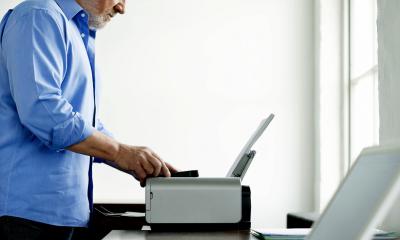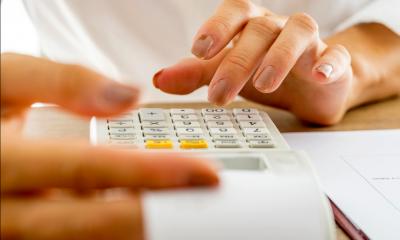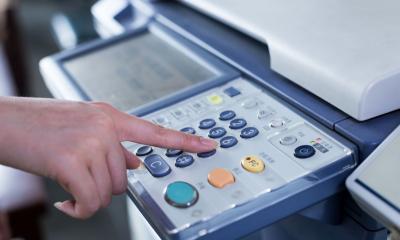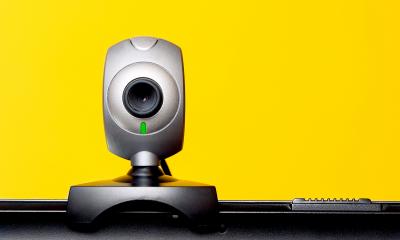
When you're choosing a printer for your business, it's really important to know what you want to use it for. Whether you want a run of 10,000 leaflets, a handful of glossy brochures or simply need to churn out documents at speed, your requirements will affect what printer you buy
For large print runs of marketing materials or complex jobs, it's probably best to contact a professional printer. But for most other tasks, modern business printers can cope. They're highly sophisticated and enable you to perform a range of more or less professional printing tasks, including various kinds of binding and printing on materials other than paper.
However, that does not mean you should buy an all-singing, all-dancing machine. There is no point spending money on bells and whistles you will never use. There is a point in spending money on a printer that will do the job you need, effectively.
Assess your printing needs
Making the right choice is all about doing your homework - assessing your own needs and then looking at the different printers on the market.
Don't be heavily swayed by lists of amazing printer features. Instead, look at your own needs:
- How much printing does your business do?
- What type of documents do you print - simple paperwork such as letters and invoices or more complex creative documents?
- Do you want to produce your own marketing materials on your printer?
- Are your printing needs changing? Are you in the process of digital transformation?
- How many staff need access to a printer?
- Do you need to print high-quality photographs on a regular basis?
- Do you need colour printing?
- Do you need to print on both sides of the paper?
- Would you like a machine that can collate and staple?
- How much are you prepared to spend on a printer? (Would it be cheaper to outsource your printing jobs?)
Answering these questions will help you create a checklist of requirements that you can match against the printers on the market. The next step is to work out what sort of machines are out there and what they can do.
Printer types
- Inkjet printers - ideal for everyday printing. They work by producing fine droplets of ink that are printed onto plain, glossy or photo paper. They are relatively cheap and are fairly standard for home printing. If your small business has very modest printing needs then an inkjet printer could be your best bet – however, the ink can be expensive, so look at running costs carefully.
- Laser printers - deliver a crisper result than inkjet printers and can be monochrome or colour. They tend to be more expensive than inkjets, but running costs are cheaper, so you can save a lot in the long term. Laser toner lasts a lot longer than ink, so you get a lot more pages printed for your cartridge. This makes them ideal for high-volume printing - they are also quiet and fast.
- Multifunction printers (MFPs) - typically offer a printer, scanner and copier in one unit, and many have a fax facility as well. These printers can save you space and money - having one unit can be much more economical than buying four separate machines. One note of caution though - while they perform all four functions adequately, they may not do everything exceptionally well. If you need high-resolution scanning, for instance, you'll need to choose carefully. In addition, cheaper models can be slow.
- Travel printer - light enough and small enough to fit into your laptop case. They run on batteries (some have car chargers) and can connect wirelessly to your laptop. However, they mean carrying extra equipment, and there are plenty of places (hotels, printing bureaus) where you can have documents printed cheaply.
- Photo printer - will give you great prints in a range of sizes. If your camera and printer have PictBridge technology, then you can connect them together without using a computer. However, both higher-end inkjet and laser colour printers can also produce professional quality photos. Expensive to run, yet offering lower quality prints than online photo printing services, photo printers are of little use to most businesses.
Key features to look for in a printer
Before you choose a printers, you'll need to think about the following:
- Speed - A good inkjet printer can print about 14 pages per minute (PPM). Laser printers offer speeds of 20PPM or above. Also compare warm-up times, as some models take longer to get going than others. (Take manufacturer's figures with a pinch of salt; they're useful for relative comparisons, but real-world performance may vary.)
- Connectivity - Most modern printers will now come complete with Bluetooth and WiFi printing, and subsequently offer compatibility with smartphones and tablets.
- Paper type and size - If you need to print anything bigger than A4, you may need to shop around for a larger printer. You'll also want to check what types of paper a printer can take and how thick it can be.
- Quality of finish - Test a variety of printing tasks before you buy to see the quality of the finish - make sure you print graphics as well as text. Resolution is measured in dots per inch (DPI). The higher the DPI, the better the image quality. The standard resolution of 600DPI is perfectly adequate for most printing, but using a higher resolution for photos may deliver marginally better results.
- Cartridges and toner - To print true black, inkjet colour printers should have a separate black cartridge. It's worth choosing an inkjet printer that has separate cartridges for each colour too - it's cheaper to replace individual colours rather than the whole cartridge. Replacing a laser printer's toner cartridge is more expensive but it lasts a long time.
- Printing on both sides - Duplexing is a technical term for printing on both sides. It's a great feature for saving paper and also for creating leaflets, instruction manuals or brochures. Watch out for ‘manual duplex', where you have to turn the paper over manually!
- Networking - Most printers aimed at small and medium-sized businesses include network connectivity (both cabled and WiFi) as standard. It's simple to connect up a modern business printer to your company network, cutting out the need for individual printers for several members of staff. Clearly this can save you money, by allowing you to invest in one printer for your business.
- Paper trays - It may seem trivial, but if your business does a lot of printing, you don't want to be filling the paper tray every five minutes. Make sure you choose a model with the right capacity. You may also require more than one paper tray, to cope with different sizes or types of paper.
- Memory - If you print large jobs or have multiple users, make sure the model you choose offers sufficient memory. Look for printers that have more than 16MB.
- Advanced functions - Automatic feeders, collating, stapling and folding are all great timesavers if you produce large printed documents on a regular basis.


